TI RM48Lx30安全系统MCU解决方案~*
发布时间:2011-9-7 15:12
发布者:1770309616
|
TI公司的RM48Lx30是高性能安全系统用的微控制器(MCU),它的安全架构包括两个步调一致的CPU,CPU和存储器内置自测(BIST)逻辑,闪存和数据SRAM的ECC,效率高达1.6 DMIPS/MHz的ARM® Cortex™-R4F浮点CPU,并可配置到在200MHz运行,提供高达320DMIPS,支持little-endian [LE32]格式,主要用在工业安全系统如工业自动化,安全PLC,电源产生和分布,电梯以及医疗电子如呼吸机, 心脏除颤器, 输液泵和胰岛素泵, 放射疗法和手术机器人等.本文介绍了RM48Lx30主要特性, 功能方框图和RM48 Hercules™ ARM® Safety MCU开发套件(HDK)主要特性,方框图与电路图. The RM48Lx30 is a high performance microcontroller family for safety systems. The safety architecture includes Dual CPUs in lockstep, CPU and Memory Built-In Self Test (BIST) logic, ECC on both the Flash and the data SRAM, parity on peripheral memories, and loop back capability on peripheral IOs. The RM48Lx30 integrates the ARM® Cortex™-R4F Floating Point CPU which offers an efficient 1.6 DMIPS/MHz, and has configurations which can run up to 200MHz providing up to 320 DMIPS. The device supports the little-endian [LE32] format. The RM48Lx30 has up to 3MB integrated Flash and up to 256KB data RAM configurations with single bit error correction and double bit error detection. The flash memory on this device is a nonvolatile, electrically erasable and programmable memory implemented with a 64-bit-wide data bus interface. The flash operates on a 3.3V supply input (same level as I/O supply) for all read, program and erase operations. When in pipeline mode, the flash operates with a system clock frequency of up to 200MHz. The SRAM supports single-cycle read/write accesses in byte, halfword, and word modes. The RM48Lx30 device features peripherals for real-time control-based applications, including two Next Generation High End Timer (N2HET) timing coprocessors with up to 44 total IO terminals and a 12-bit Analog-to-Digital converter supporting up to 24 inputs. The N2HET is an advanced intelligent timer that provides sophisticated timing functions for real-time applications. The timer is software-controlled, using a reduced instruction set, with a specialized timer micromachine and an attached I/O port. The N2HET can be used for pulse width modulated outputs, capture or compare inputs, or general-purpose I/O. It is especially well suited for applications requiring multiple sensor information and drive actuators with complex and accurate time pulses. A High End Timer Transfer Unit (HET-TU) can perform DMA type transactions to transfer N2HET data to or from main memory. A Memory Protection Unit (MPU) is built into the HET-TU. The device has two 12-bit-resolution MibADCs with 24 total channels and 64 words of parity protected buffer RAM each. The MibADC channels can be converted individually or can be grouped by software for sequential conversion sequences. Sixteen channels are shared between the two MibADCs. There are three separate groupings. Each sequence can be converted once when triggered or configured for continuous conversion mode. The device has multiple communication interfaces: three MibSPIs, up to two SPIs, one LIN, one SCI, three DCANs, one I2C. The SPI provides a convenient method of serial interaction for high-speed communications between similar shift-register type devices. The LIN supports the Local Interconnect standard 2.0 and can be used as a UART in full-duplex mode using the standard Non-Return-to-Zero (NRZ) format. The DCAN supports the CAN 2.0B protocol standard and uses a serial, multimaster communication protocol that efficiently supports distributed real-time control with robust communication rates of up to 1 megabit per second (Mbps). The DCAN is ideal for applications operating in noisy and harsh environments (e.g., automotive and industrial fields) that require reliable serial communication or multiplexed wiring. The I2C module is a multi-master communication module providing an interface between the microcontroller and an I2C compatible device via the I2C serial bus. The I2C supports both 100 Kbps and 400 Kbps speeds. The frequency-modulated phase-locked loop (FMPLL) clock module is used to multiply the external frequency reference to a higher frequency for internal use. The FMPLL provides one of the seven possible clock source inputs to the global clock module (GCM). The GCM module manages the mapping between the available clock sources and the device clock domains. The device also has an external clock prescaler (ECP) module that when enabled, outputs a continuous external clock on the ECLK pin/ball. The ECLK frequency is a user-programmable ratio of the peripheral interface clock (VCLK) frequency. This low frequency output can be monitored externally as an indicator of the device operating frequency. The Direct Memory Access Controller (DMA) has 16 channels, 32 control packets and parity protection on its memory. A Memory Protection Unit (MPU) is built into the DMA to protect memory against erroneous transfers. The Error Signaling Module (ESM) monitors all device errors and determines whether an interrupt or external Error pin/ball is triggered when a fault is detected. The nERROR can be monitored externally as an indicator of a fault condition in the microcontroller. The External Memory Interface (EMIF) provides a memory extension to asynchronous and synchronous memories or other slave devices. Several interfaces are implemented to enhance the debugging capabilities of application code. In addition to the built in ARM Cortex™-R4F CoreSight™ debug features. An External Trace Macrocell (ETM) provides instruction and data trace of program execution. For instrumentation purposes, a RAM Trace Port Module (RTP) is implemented to support high-speed tracing of RAM and peripheral accesses by the CPU or any other master. A Data Modification Module (DMM) gives the ability to write external data into the device memory. Both the RTP and DMM have no or only minimum impact on the program execution time of the application code. A Parameter Overlay Module (POM) can re-route Flash accesses to internal memory or to the EMIF, thus avoiding the re-programming steps necessary for parameter updates in Flash. With integrated safety features and a wide choice of communication and control peripherals, the RM48Lx30 is an ideal solution for high performance real time control applications with safety critical requirements. RM48Lx30主要特性: High-Performance Microcontroller for Safety Critical Applications Dual CPU’s running in lockstep ECC on flash and RAM interfaces Built-In Self Test for CPU and on-chip RAMs Error Signaling Module with Error Pin Voltage and Clock Monitoring ARM® Cortex™ - R4F 32-bit RISC CPU Efficient 1.6DMIPS/MHz with 8-stage pipeline Floating-Point Unit with Single/Double Precision 12-Region Memory Protection Unit Open Architecture with 3rd Party Support Operating Conditions Up to 200MHz System Clock Core Supply Voltage (VCC): 1.2V nominal I/O Supply Voltage (VCCIO): 3.3V nominal Integrated Memory Up to 3MB Program Flash with ECC Up to 256KB RAM with ECC 64KB Flash for emulated EEPROM 16- bit External Memory Interface RM48Lx30应用: Industrial Safety Applications Industrial Automation Safe PLC’s (Programmable Logic Controllers) Power Generation and Distribution Turbines and Windmills Elevators and Escalators Medical Applications Ventilators Defibrillators Infusion and Insulin pumps Radiation therapy Robotic surgery 
图1.RM48Lx30功能方框图 RM48 Hercules™ ARM® Safety MCU开发套件(HDK) The RM48 Hercules Development Kit is ideal for getting started on development with the Hercules platform of safety microcontrollers. The development board features RJ45 10/100 Ethernet, USB-A Host, and USB-B Device Interfaces along with an on board XDS100v2 JTAG emulator and access to all peripheral pins. The kit is comprised of a development board, a DC power supply, a mini-B USB cable, an Ethernet cable and a software installation DVD that includes Code Composer Studio IDE, HALCoGen, nowFlash, HET IDE, demo software and code examples. RM48开发套件(HDK)主要特性: • A Texas Instruments RM48L950 337-pin BGA microcontroller • On board USB XDS100v2 JTAG emulator • ARM 20-pin JTAG debug header for external JTAG emulator • External emulator detection circuit • 10/100 Mbps Ethernet interface • One USB host, and one USB device • Two DCAN Transceivers and screw terminal blocks • One ambient light sensor • One ambient temperature sensor • SCI accessible through a USB Virtual Port (VCP) • One 8MB SDRAM • Eight user programmable LEDs (2 tri-color LEDs, and 6 white LEDs) • One user programmable pushbutton • Three expansion connectors for hardware prototyping and daughter card use • Reset pushbuttons (nPOR and nRST) • One SD card slot (SPI mode) • Embedded trace macrocell (ETM) debug interface via MIPI connector • Configurable pin mux options • 5V and 3.3V ADC option jumper (configured 5V by default) • Current measurement capability for 3.3V IO, 1.2V Core, 1.2V PLL, 3.3V or 5V ADC, and 3.3V VCCP. • Power supply supporting 5V to 12V DC input RM48开发套件(HDK)包括: RM48L950 Development board CCStudio v4.x IDE: C/C++ Compiler/Linker/Debugger HALCoGen Peripheral Driver Generation Tool CCS and nowFlash Flash Programming Tools HET IDE/Simulator/Assembler GUI Demos with Project/Code Examples Type A to mini B USB cable for using on board XDS100V2 JTAG emulator Flashlight for light sensor demo 
图2. RM48开发套件(HDK)外形图 
图3. RM48开发套件(HDK)外形图(1) 
图4. RM48开发套件(HDK)板框图 
图5. RM48 HDK电路图(1) 
图6. RM48 HDK电路图(2) 
图7. RM48 HDK电路图(3) 
图8. RM48 HDK电路图(4) 
图9. RM48 HDK电路图(5) 
图10. RM48 HDK电路图(6) 
图11. RM48 HDK电路图(7) 
图12. RM48 HDK电路图(8) 
图13. RM48 HDK电路图(9) 
图14. RM48 HDK电路图(10) 
图15. RM48 HDK电路图(11) 
图16. RM48 HDK电路图(12) 
图17. RM48 HDK电路图(13) 
图18. RM48 HDK电路图(14) 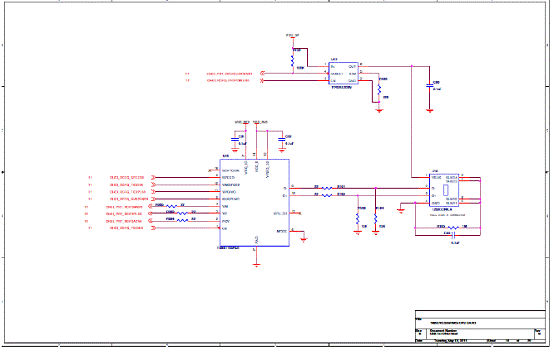
图19. RM48 HDK电路图(15) 
图20. RM48 HDK电路图(16) 
图21. RM48 HDK电路图(17) 
图22. RM48 HDK电路图(18) 
图23. RM48 HDK电路图(19) 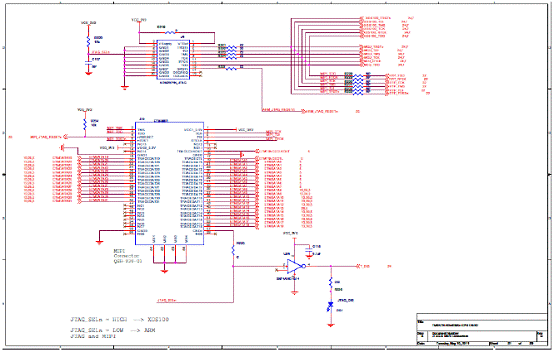
图24. RM48 HDK电路图(20) 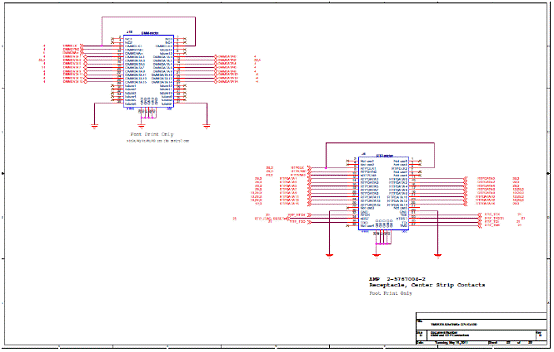
图25. RM48 HDK电路图(21) 
图26. RM48 HDK电路图(22) 
图27. RM48 HDK电路图(23) 
图28. RM48 HDK电路图(24) 
图29. RM48 HDK电路图(25) 
图30. RM48 HDK电路图(26) 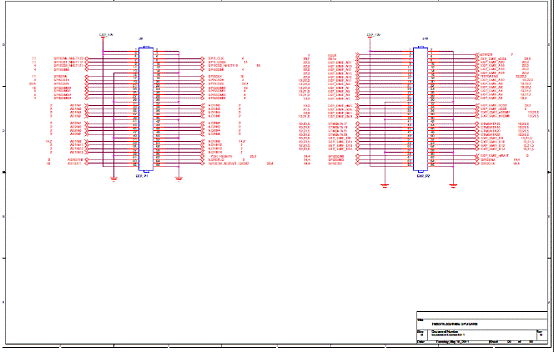

图31. RM48 HDK电路图(27) 详情请见: http://www.ti.com/lit/ds/symlink/rm48l530.pdf 和 http://www.ti.com/lit/ug/spnu508/spnu508.pdf |




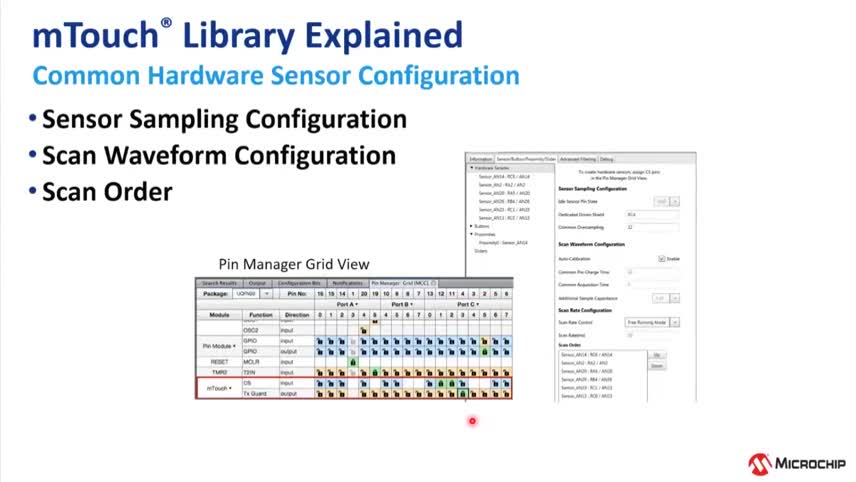


网友评论